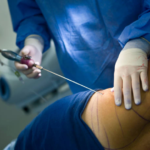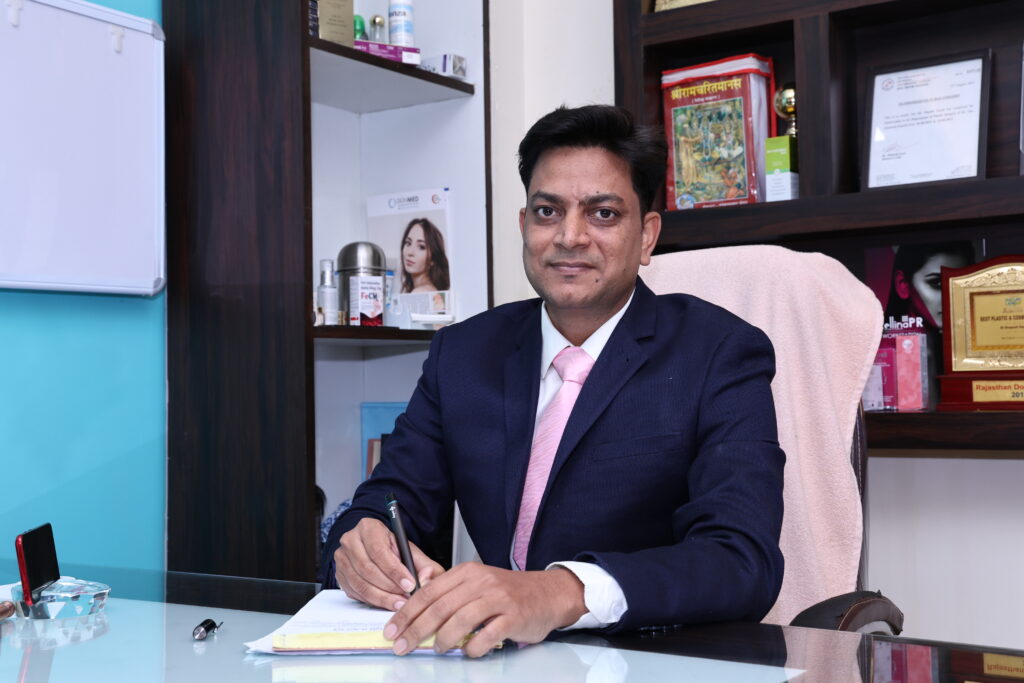Tummy tucks, or abdominoplasty, are gaining immense popularity worldwide. According to the American Society of Plastic Surgeons, over 140,000 tummy tuck procedures are performed annually, reflecting the number of people seeking to enhance their body contours through surgery.
Dr. Deepesh Goyal, Founder of Rejuvena Cosmo Care, often called the best plastic surgery clinic in Jaipur, explains:
“A tummy tuck removes excess skin and tightens abdominal muscles, providing a flatter, firmer midsection. It also improves body proportions and restores confidence. Additionally, it helps correct muscle separation, which commonly occurs after pregnancy, and enhances core stability, leading to better posture and reduced back pain.”
However, one possible post-surgical concern is Pseudobursa After Tummy Tuck—a pocket of fluid and scar tissue that forms under the skin. This blog explores its causes, symptoms, treatment options, and prevention strategies to help you stay informed.
Why is your hair transplant not yielding the density you expected? Let’s uncover the causes behind this issue.
Pseudobursa After Tummy Tuck - Causes
Even though tummy tucks are generally successful, some patients develop pseudobursa, an abnormal tissue pocket. Understanding its causes can help minimize risks.
Seroma Formation
The body sometimes reacts to surgery by accumulating fluid in the healing area. If a seroma (fluid pocket) does not drain properly, it can harden into a pseudobursa.
Excessive Scar Tissue
The healing process involves scar formation, but sometimes, excess fibrous tissue develops between the skin and muscle, creating a noticeable bulge.

Incomplete Tissue Removal
If excess skin or fat isn’t properly removed during the surgery, it can create tension, leading to abnormal tissue formation.
Post-Surgical Inflammation
Inflammation is part of healing, but prolonged swelling and irritation can contribute to pseudobursa formation.
Suturing Techniques
Tight internal sutures may restrict normal tissue movement, leading to pockets of trapped scar tissue.
Noticing unusual swelling, discomfort, or a firm mass after surgery? It’s best to seek professional advice to prevent complications.
Ignoring warning signs could mean prolonged discomfort and unwanted aesthetic results, says Dr. Goyal, an eminent expert for tummy tuck in Jaipur. Let’s look at the telltale symptoms you shouldn’t overlook.
Symptoms of Pseudobursa You Shouldn’t Ignore
Recognizing early symptoms of pseudobursa after tummy tuck is essential for timely intervention.

1. Noticeable Lump or Bulge
A firm, localized swelling under the skin, distinct from post-surgical swelling, may indicate pseudobursa formation.
2. Restricted Movement
Tightness or discomfort when stretching or bending may result from scar tissue adhesion.
3. Persistent Swelling
If swelling does not subside within the expected recovery period, it could signal fluid accumulation or fibrous tissue.
4. Pain or Discomfort
Pseudobursa may cause tenderness or mild pain, especially when pressing on the affected area.
5. Skin Irregularities
Uneven contours or asymmetry in the abdomen can indicate abnormal tissue formation.
Dr. Deepesh Goyal, a trusted surgeon for abdominoplasty in Jaipur, cautions:
“Ignoring these signs can lead to long-term discomfort and aesthetic concerns. Timely intervention ensures a smoother recovery and better cosmetic results. Early diagnosis also prevents the need for more invasive corrective procedures later.”
If you’re experiencing any of these symptoms, the good news is that solutions are available. Let’s explore the best treatment options to address pseudobursa effectively.
Treatment Options for Pseudobursa after Abdominoplasty
Non-Surgical Management
Conservative measures like compression garments and physical therapy can help for mild cases. Compression garments support healing tissues, while specific massage techniques improve circulation, reduce swelling, and gradually break down scar tissue.
Steroid Injections
Corticosteroid injections help reduce inflammation and soften fibrous tissue, making the pseudobursa less noticeable. This non-invasive approach is often recommended for patients who prefer to avoid surgery and can provide significant relief when administered by a skilled plastic surgeon.
Manual Drainage
When fluid accumulation persists, a surgeon may use aspiration techniques to drain excess fluid from the affected area. This procedure is minimally invasive, requires no significant downtime, and helps prevent the pseudobursa from enlarging further.
 Liposuction
Liposuction
A liposuction surgeon can perform targeted liposuction to remove excess
fat around the pseudobursa, improving contour and reducing the prominence of the bulge, while preserving surrounding tissues. During the procedure, a plastic surgeon makes small incisions and inserts a thin tube called a cannula to break up and suction out fat. Liposuction is a less invasive alternative to surgical excision and often provides excellent aesthetic results.
Surgical Excision
For severe cases, revision surgery is the most effective solution. The surgeon carefully removes the pseudobursa along with any fibrous tissue that has formed. This ensures a smoother abdominal contour and prevents recurrence, restoring function and appearance.
Are you experiencing discomfort post tummy tuck? Consulting a plastic surgeon ensures proper assessment and the best treatment plan tailored to your needs.
While treatment options exist, wouldn’t it be better to avoid pseudobursa altogether? Dr. Deepak Goyal, a go-to liposuction surgeon in Jaipur, shares a few proactive steps to prevent this complication.
Preventing Pseudobursa After a Tummy Tuck

Follow Post-Surgical Care Guidelines
Strictly following your surgeon’s aftercare instructions minimizes complications and supports optimal healing. Proper wound care, activity restrictions, and medication adherence are crucial to preventing fluid accumulation.
Wear Compression Garments
Compression garments provide gentle pressure that helps reduce swelling, support healing tissues, and prevent fluid pockets from forming. Wearing them as prescribed significantly lowers the risk of developing a pseudobursa.
Avoid Strenuous Activities
Heavy lifting or vigorous exercise too soon can strain the healing tissues, leading to excessive scar tissue formation. Gradually resuming physical activities under medical supervision helps maintain surgical results while avoiding complications.
Maintain a Healthy Diet
A well-balanced diet rich in vitamins, proteins, and essential nutrients promotes faster healing and reduces inflammation. Staying hydrated also helps prevent excessive fluid retention, which can contribute to pseudobursa formation.
Attend Follow-Up Appointments
Regular check-ups with a plastic surgeon in Jaipur allow for early detection of any complications. If signs of fluid buildup or irregular healing appear, your surgeon can intervene promptly to prevent the formation of a pseudobursa.
Why Choose Rejuvena Cosmo Care for Your Tummy Tuck Care?
Expert Surgical Team led by Dr. Deepesh Goyal, a seasoned Plastic surgeon in Jaipur, with extensive experience in abdominoplasty.
- Advanced minimally invasive techniques for better healing.
- Comprehensive pre- and post-operative care.
- Personalized treatment plans for optimal results.
- State-of-the-art facilities ensuring safety and comfort.
- High success rates with proven patient satisfaction.
- Commitment to aesthetic excellence and patient well-being.
Have concerns about your recovery? A professional consultation can address your doubts and provide the best course of action for a smooth outcome.
Let’s clear up common concerns about tummy tuck recovery and potential complications.
FAQs
Can a tummy tuck completely remove excess belly fat?
A tummy tuck removes loose skin and tightens muscles, but liposuction may be needed for excess fat removal.
How long does recovery take after a tummy tuck?
The recovery timeline can vary, but most patients resume normal activities within 4-6 weeks, with complete healing taking several months.
Is pseudobursa a common complication after abdominoplasty?
While not common, it can occur if fluid accumulation or excessive scar tissue develops post-surgery.
Can pseudobursa resolve on its own?
In some cases, mild pseudobursa may improve with compression and therapy, but severe cases often require intervention.
How can I minimize the risk of pseudobursa after surgery?
Following post-op guidelines, wearing compression garments, and avoiding strenuous activities can significantly lower risks.
Disclaimer: The information shared in this content is for educational purposes only and not for promotional use.

 Liposuction
Liposuction